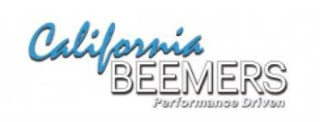TTAB Posts October 2019 Hearing Schedule
The Trademark Trial and Appeal Board (Tee-Tee-Ā-Bee) has scheduled seven (7) oral hearings for the month of October 2019. Four of the hearings will be held in the East Wing of the Madison Building, in Alexandria, Virginia. The first hearing listed below will be held at Northwestern Pritzker School of Law in Chicago. The hearings for the last two listed cases will be held at Gaylord National Resort & Convention Center in National Harbor, Maryland. Briefs and other papers for these cases may be found at TTABVUE via the links provided.

October 3, 2019 - 1:45 PM: Entertainment Content, Inc. v. Career Sports & Entertainment, Inc., Opposition No. 91223121 [Section 2(d) opposition to registration of the mark JUSTICE NETWORK for television programming services and video production and distribution, in view of the registered marks JUSTICE CENTRAL and JUSTICECENTRAL.TV for video and audio programming and transmission service].
October 8, 2019 - 10 AM: In re SF Investments, Inc., Serial No. 87661190 [Section 2(e)(2) refusal to register SMITHFIELD for meat, lard, and offal on the ground that the mark is primarily geographically descriptive of the goods].
October 9, 2019 - 1 PM: Spiritline Cruises LLC v. Tour Management Services, Inc., Opposition No. 91224000 [Opposition to registration of CHARLESTON HARBOR TOURS for "Arranging of travel tours and cruises; Boat transport; Conducting boat charters; Conducting power boat charters; Conducting sightseeing travel tours by boat; Conducting sightseeing travel tours for others; Travel tour conducting; Travel tour guide services; Yacht and boat charter services" on the grounds of genericness, mere descriptiveness and lack of acquired distinctiveness, and non-ownership].
October 15, 2019 - 11 AM: In re Hidive LLC, Serial No. 87819793 [Section 2(d) refusal of DUBCAST for "Transmission and delivery of television programs via the internet; Transmission of information in the audiovisual field; Electronic transmission and streaming of digital media content for others via global and local computer networks; Video broadcasting and transmission services via the Internet, featuring films and movies; Video-on-demand transmission services; Video-on-demand transmission services via the Internet," in view of the registered mark DUBLAB (in standard character form) for "broadcasting programs via a global computer network"].
October 17, 2019 - 1 PM: In re Flex Ltd., Serial No. 87648828 [Refusal to register INTELLIGENCE OF THINGS for "Supply chain management services; business management services, namely, managing logistics, reverse logistics, supply chain services, supply chain synchronization, supply and demand forecasting, and product distribution processes for others," on the ground that it fails to function as a service mark, but rather comprises a commonplace term, message, or expression widely used by a variety of sources that merely conveys an ordinary, familiar, well-recognized concept or sentiment].
October 24, 2019 - 10:15 AM: In re Omniome, Inc., Serial No. 87661190 [Section 2(e)(1) mere descriptiveness refusal of SEQUENCING BY BINDING for "reagents for analysis of biological analytes; research laboratory analyzers for analysis of biological analytes for non-medical purposes devices for analysis of biological analytes for medical purposes; analysis of biological analytes; development of new technology for others for analysis of biological analyte"].
October 24, 2019 - 11 AM: In re La Mamba, LLC., Serial No. 87791970 [Section 2(d) refusal of PARC & LEX in the design form shown below, for “Clothing, namely, t-shirts, sweatshirts, skirts, pants, jeans, coats, dresses, underwear, tops and bottoms; headwear; footwear,” in view of the registered mark PARK & LEX for "Jewelry, namely, necklaces, bracelets and earrings"].
Read comments and post your comment here.
TTABlog note: Any predictions? See any WYHA?s?
Text Copyright John L. Welch 2019.





































